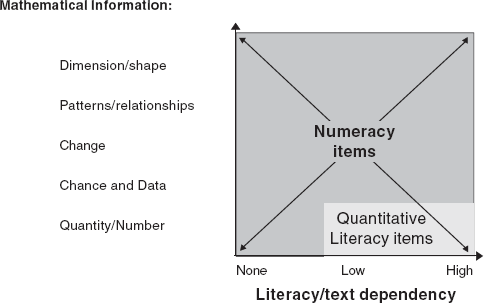5. Summary: Directions and challenges in assessing Numeracy in ALL
Given the increasing need for adults to continuously adapt to changing citizenship and workplace demands (European Commission's White Paper, 1996), it is vital that nations have information about their workers' and citizens' numeracy in order to understand skill distributions in the population as a whole as well as in specific groups, and be able to plan effective lifelong learning opportunities.
Numeracy, a domain to be assessed in the ALL survey, has been conceptualized in this report as a broader construct than Quantitative Literacy that was assessed in the earlier IALS. Numeracy requires more varied responses (order, count, estimate, compute, measure, interpret, explain) to a wider range of mathematical information (quantity, dimension and shape, pattern and relationships, data and chance, and change) that may be embedded in text in varying degrees. Figure 2 illustrates the difference between the scope of topics that should be encompassed by Numeracy and Quantitative Literacy items.
Figure 2
Numeracy versus Quantitative Literacy
